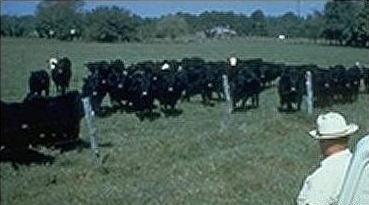Characterization of the Ashepoo-Combahee-Edisto (ACE) Basin, South Carolina
Socioeconomic Assessment
Our interactions with the environment, including extraction of resources and alteration to the physical landscape, often have far-reaching effects. To manage resources of the ACE Basin effectively, there must be both an understanding of the physical and biological environment and knowledge of socioeconomic conditions. Socioeconomic data provide an important perspective of the individuals and businesses that reside in the ACE Basin. These entities are the primary stakeholders in the region's ecological health and economic development, and ultimately determine what strategies will or will not succeed in the area.
The population of the ACE Basin is centered near the three incorporated municipalities of Walterboro, Cottageville, and Edisto Beach. Presently, Walterboro is the only urban area in Colleton County with public water and sewer facilities that can support an increase in the population (Colleton County Land Use Planning Task Force 1997). In 1990, educational attainment was low in the ACE Basin and 24% of residents in the five incorporated areas lived in poverty. Low educational attainment represents a potentially significant economic barrier for the region. The average earnings per job were only $19,497 in 1996 for Colleton County (U.S. Dept. of Commerce 1998), with a racial gap in the earnings (USCB 1990). It is misleading to assume that average figures are representative of the whole region. The urban areas, and especially the pocket resort and high-end residential communities, have higher relative wealth and educational backgrounds than is apparent from the county or subdivision averages.
That nearly 27% of Colleton County residents travel to work outside the county, compared to approximately 7% and 2% in Charleston and Beaufort Counties, respectively (USCB 1990), highlights the need for more opportunities in the Colleton area. It also highlights the potential for Colleton to become a bedroom community to more prosperous areas and the increased threat of the subdivision of natural areas into residential developments. Land use planning in the ACE Basin will be an important tool to guide development in a way that does not compromise the potential benefits of the area's natural resources. If the ACE Basin's proximity to the economic resources of neighboring areas is used to support sustainable economic development of the Basin's natural resources, then the outflowing tide of economic benefits can be turned back toward the Basin.

The primary industry-related activities in the ACE Basin include light manufacturing, the service sector, forestry, and agriculture. Three key strategies were established by the ACE Basin Economic Task Force to encourage economic growth while preserving the natural characteristics of the Basin: (1) create a framework for responsible growth; (2) enhance awareness, understanding, and appreciation of the Basin; and (3) promote environmentally compatible business development. In particular, natural resource-based industries such as agriculture, forestry, seafood, and local crafts have played a key role in the ACE Basin's heritage, and recommendations were established for exploring new ways to make these industries develop higher value-added products and operate in a more sustainable fashion. New and increased nature-based tourism development is highly desirable and environmentally compatible, thereby allowing the area to capitalize on and protect the region's character and natural assets (ACE Basin Economic Forum 1996).
